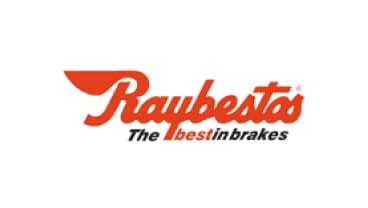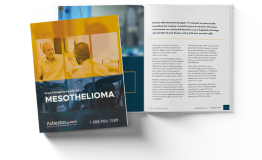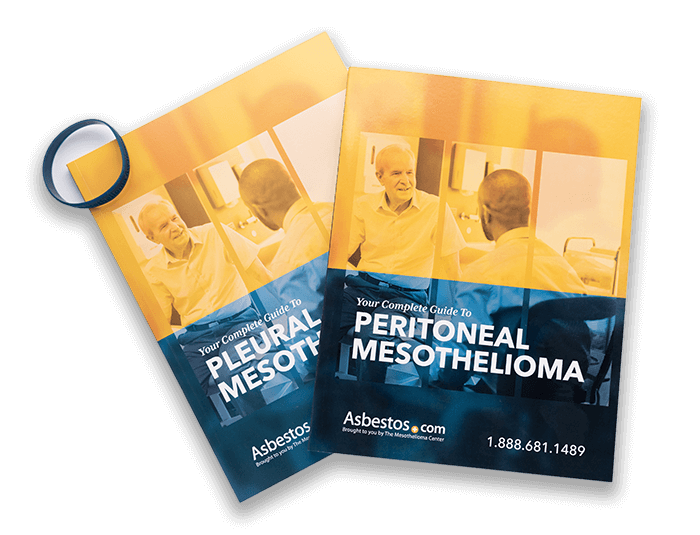Written by Daniel King | Scientifically Reviewed By Sean Fitzgerald, PG | Edited By Walter Pacheco | Last Update: July 18, 2024
Raybestos’ History with Asbestos
Raybestos was founded in 1925 as an asbestos brake manufacturer. The company went on to produce a number of asbestos-containing products such as clutches, valves, textiles and insulating materials.
Asbestos was used to strengthen these products and prevent the risk of fire in friction materials such as brakes and clutches.
The company changed its name in 1982 to Raymark, hoping to distance itself from asbestos, and it stopped making asbestos products during the 1980s.
By then, it was already facing many asbestos personal injury claims.
Raybestos had a history of denying any knowledge of the health problems caused by asbestos. Sumner Simpson, president of then-Raybestos for 40 years, was involved in legal proceedings and attempted to cover up the company’s asbestos liabilities.
Development of Raybestos Trust
Raymark created holding companies and used spinoff companies in hopes of protecting assets against the flood of litigation. One of these attempts involved a spinoff company called Raytech.
In 1987, Raytech took control of Raybestos’ non-asbestos business assets. In the deal, Raymark agreed to not hold Raytech accountable for its asbestos liabilities, but bankruptcy proceedings ended up dissolving this agreement.
In 1989, Raymark sought bankruptcy protection under Chapter 7. Raytech sought bankruptcy protection under Chapter 11 the same year.
Raytech emerged from bankruptcy protection in April 2001 and created the Raytech Corporation Asbestos Personal Injury Settlement Trust. The trust handles claims arising from exposure to asbestos products made by Raybestos, Raymark and other affiliated corporate entities.
According to a 2021 report of the previous year’s payouts, the trust paid out $1.2 million in 2020 alone.
In February 2018, the trust’s payment percentage was increased from 0.84% to 0.92%.

Gain access to trust funds, grants and other forms of compensation for you or your loved ones.
Get Help NowAsbestos Litigation Involving Raybestos
Raymark has a long history of involvement in asbestos litigation brought by victims and family members with asbestos-related illnesses, including asbestosis and mesothelioma cancer.
Under CEO Craig Smith, Raymark aggressively fought off many litigants in the 1980s. It even sued law firms that represented people trying to recover damages for their exposure to asbestos from decades before.
- In one example, Stevens v. Raymark Industries Inc. et al., the dependent widow of a former Raymark employee was awarded benefits following her husband’s asbestosis-related death in 2000.
- Another important case brought by the State of Connecticut against Raymark recouped the amount spent by the state on cleanup efforts from the manufacturing plants.
- In 2018, a three-judge arbitration panel in Beaumont, Texas, awarded $140 million to more than 2,000 refinery and chemical workers in Cimino v. Raymark. That case began as a class-action lawsuit in 1990. The award came as an addition to a previous $38 million settlement.
- In June 2012, a California jury awarded a $2.1 million verdict to a man who claimed handling asbestos brake parts were partly responsible for his mesothelioma cancer. Although the man was a plumber by trade, he repaired car and truck brakes. He identified Raybestos as one of a handful of companies as the source of the brakes and brake parts that he handled. He testified that he began handling the brakes at a young age while helping his father service various trucks that he owned.
Raybestos’ Asbestos Products and Workers at Risk
Raybestos manufactured the following asbestos-containing products:
- Brakes
- Brake pads
- Brake linings
- Drum brakes
- Disc brakes
- Clutches
- Clutch linings
- Valves
- Packing material
- Tape
- Felt
- Rope
- Yarn
- Blankets
- Cloth
- Fire curtains
- Aprons
Anyone who worked in a Raymark, Raytech or Raybestos manufacturing plant could have been exposed.
Other occupations at risk of asbestos exposure through Raybestos products include:
- Automobile mechanics
- Maintenance mechanics
- Railroad mechanics
- Machinists
- Automobile shop workers
- Automobile supply store workers
- Shipyard workers
- Industrial workers
- Factory workers
- Textile workers
- Mill workers
- Refinery workers
- Insulators
- Acoustical workers
- Boiler workers
- Welders
The same materials used to produce car brakes were also used in trucks and trains and all large machinery that stops through friction. Brakes were produced for clutches, textile industrial machinery winches, hoists and moving equipment.
Raybestos’ asbestos products were used on many job sites such as automobile factories, chemical plants, steel plants, power plants, refineries, mills and railways.
Raybestos Contamination Sites
Connecticut
People working at Raybestos plants, including a plant in Stratford, Connecticut, and those living nearby were affected by the products being manufactured.
Health outcome data reviewed by the Agency for Toxic Substances and Disease Registry revealed that Stratford had higher-than-average rates of mesothelioma and all other cancers in residents under 25 years old.
Numerous investigations at Raybestos’ facility in Stratford have been conducted since 1984. In 1993, the Agency for Toxic Substances and Disease Registry issued a Public Health Advisory stating that people could be exposed to contaminants in the area in a number of ways, including by inhalation, skin contact, soil waste ingestion and ingestion of contaminated local seafood.
In 2018, the National Oceanic and Atmospheric Administration released a draft Restoration Plan and Environmental Assessment along the Housatonic River, which flows through Connecticut and Massachusetts. Raybestos once dumped its contaminated waste materials, including asbestos, lead and copper, in the Housatonic River.
Although Raybestos operations in Stratford ended in 1989, the restoration project continues, funded in part by the company’s bankruptcy reorganization plan.
Pennsylvania
Raybestos operated manufacturing plants in two Pennsylvania cities: Hatboro and Manheim. These plants contaminated surrounding areas with asbestos.
In 1989, the U.S. Environmental Protection Agency added the Hatboro site to its Superfund National Priorities List.
The agency has conducted numerous tests and carried out various remediation efforts to contain the contamination and clean up the site. For example, in 2018, the agency conducted air monitoring tests in surrounding neighborhoods and found no signs of contaminants in air samples. The site continues to be monitored and cleaned by the agency.
The Manheim plant operated from 1906 to 1998, which led to contamination of the surrounding soil and groundwater. In 2005, the site was added to the state’s Brownfield Action Team program, which allocated cleanup resources to the property. The site is no longer a threat to human health, but cleanup activities continue to maintain capped asbestos landfills. Groundwater monitoring continues as well.
Raybestos History
Raybestos was founded in 1902 as the A.H. Raymond Company. The company built an empire around its original “Raymond Brake” and expanded its product line to include other brake products throughout the 20th century.
The company went through a number of acquisitions and name changes that included Raytech, Raybestos Industries, Raybestos-Manhattan and Raymark Industries.
In 1985, Echlin, an automotive aftermarket supplier, bought Raymark’s Raybestos brand and incorporated a new company, called Brake Parts Inc., to market and sell the product line.
Today, Brake Parts Inc. continues to produce vehicle brakes and brake parts under the Raybestos brand, most notably in automobiles.
This Page Contains 10 Cited Articles
The sources on all content featured in The Mesothelioma Center at Asbestos.com include medical and scientific studies, peer-reviewed studies and other research documents from reputable organizations.
- CPF, Inc. (2021). Annual Report Raytech Trust. Retrieved from https://www.cpf-inc.com/assets/1/6/Raytech-2020-Annual-Report.PDF
- U.S. EPA. (2019, December 2). Hazardous Waste Cleanup: Raymark Industries in Manheim, Pennsylvania. Retrieved from https://www.epa.gov/hwcorrectiveactionsites/hazardous-waste-cleanup-raymark-industries-formerly-manheim-area-economic
- Suy, P. (2018, December 7). Settlement brings end to major asbestos case. Retrieved from https://www.beaumontenterprise.com/news/article/Settlement-brings-major-asbestos-case-to-a-close-13450916.php
- NOAA. (2018, November 9). Raymark Industries, Inc. Retrieved from https://darrp.noaa.gov/hazardous-waste/raymark-industries-inc
- Raytech Creditors Trust. (2018, January 31). Trust Payment Percentage Notice. Retrieved from https://www.cpf-inc.com/assets/1/6/RAY_Trust_Payment_Percentage_Notice_2018.pdf
- CT Post. (2011, October 30). Raymark Timeline. Retrieved from https://www.ctpost.com/local/article/Raymark-timeline-2242269.php
- U.S. Environmental Protection Agency. (2011). Raymark Hatboro, PA. Retrieved from https://cumulis.epa.gov/supercpad/CurSites/csitinfo.cfm?id=0300894&msspp=med
- Agency for Toxic Substances and Disease Registry. (2010). Public Health Assessment Raymark Industries Stratford, Fairfield County, Connecticut. Retrieved from https://www.atsdr.cdc.gov/HAC/PHA/HCPHA.asp?State=%27CT%27
- Compensation Review Board. (2008). Stevens v. Raymark Industries, Inc. et al. Retrieved from http://wcc.state.ct.us/crb/2008/5215crb.htm
- Alexander, L. (2005, March 31). State to help Manheim clean up Raymark site. Retrieved from https://lancasteronline.com/news/state-to-help-manheim-clean-up-raymark-site/article_0051bdcb-a848-5be1-af49-d83a4e6a3261.html








